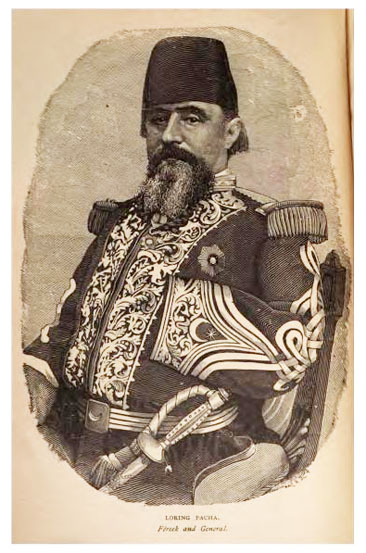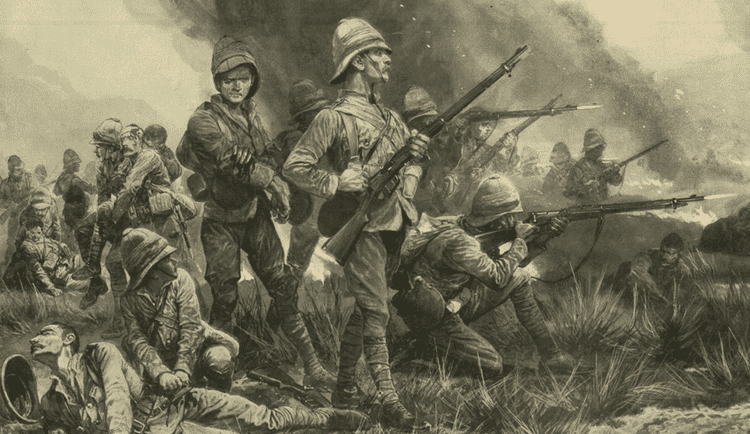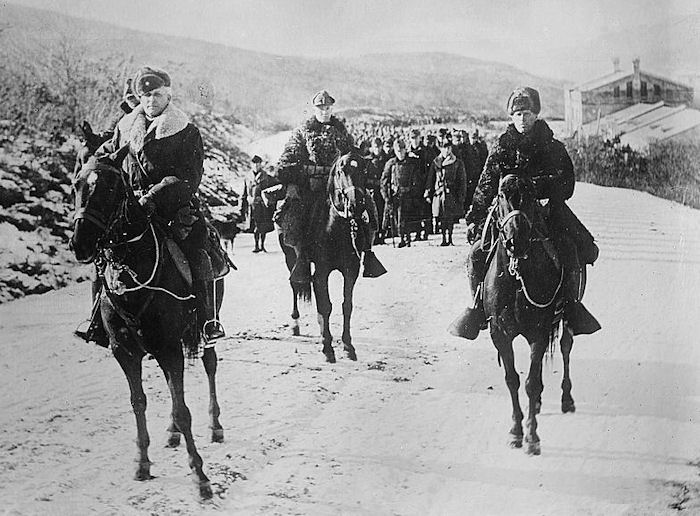You are using an out of date browser. It may not display this or other websites correctly.
You should upgrade or use an alternative browser.
You should upgrade or use an alternative browser.
Photos from Alternate Worlds II (read FAQ first)
From FoM’s image thread:


A bottle of imported Mussolini brand wine with a partially filled glass at an Italian restaurant in Shenyang, circa 2007 (top). A young Chinese girl eating spaghetti at an Italian restaurant in Beijing, circa 2020 (bottom).
The Republic of China has a had huge craze with all things Italian from the end of the Chinese War, when it was South China, all the way past reunification with the North and up to the present day. Italian food, and Sino-Italian fusion cuisine, is well loved and anything to do with fascism or fascist iconography, in particular Mussolini, is insanely popular in the Middle Kingdom with tons memorabilia and products that have the likeness of Mussolini, Balbo, Ciano and many other Italian fascists. In recent years, Achille Starace has gained popularity in t-shirt sales.



The interior of Ciano’s, an upscale Italian restaurant on the waterfront in Shanghai (top). A Balbo coffee mug (centre). Chinese-style arribiata pasta, a favourite of Ciano’s patrons (bottom).


A bottle of imported Mussolini brand wine with a partially filled glass at an Italian restaurant in Shenyang, circa 2007 (top). A young Chinese girl eating spaghetti at an Italian restaurant in Beijing, circa 2020 (bottom).



The interior of Ciano’s, an upscale Italian restaurant on the waterfront in Shanghai (top). A Balbo coffee mug (centre). Chinese-style arribiata pasta, a favourite of Ciano’s patrons (bottom).
What's the plot?
According to Wikipedia, The Search for Mickey Mouse was a film that was planned but was cancelled. To honor the 75 anniversary of Mickey Mouse in 2002, the film was put into preproduction and was supposed to be released as Walt Disney's 50th animated feature in the early 2010s. In what would have been the plot, Mickey gets "mousenapped" by unknown forces, forcing Minnie Mouse to enlist Basil of Baker Street from The Great Mouse Detective to investigate his disappearance, and later encounters one character from Disney's animated film canon such as Alice, Peter Pan, Robin Hood, and Aladdin. However, the project suffered script problems with the multiple cameos being thought to be too gimmicky. The project was cancelled between 2002 and 2003 but would later replaced by Mickey, Donald, Goofy: The Three Musketeers, which which came out in 2004. Tangled would later be released as Disney's 50th animated feature in 2010.
Pedro Orochi
Banned
PlotWhat's the plot?
The premise is about Mickey Mouse is kidnapped by unknown forces, forcing Minnie Mouse to enlist Basil of Baker Street to investigate his disappearance. Along the way, they encounter one character from Disney's animated film canon including Alice, Peter Pan, Robin Hood, and Aladdin [2].
Pedro Orochi
Banned
Dumbo II (DVD)
Plot
Taking place specifically one day after the events of the first film, the story would have involved Dumbo, Timothy Q. Mouse and a host of other baby animals, each of whom represented a different stage of childhood, getting separated in New York City. While trying to find their way back, each character learned how to fix his or her own problems. Dumbo II also sought to explain what happened to Dumbo's father, Mr. Jumbo.
Pedro Orochi
Banned
serial killer Ted Bundy in 2019, serving the majority of his sentence at home since he is on a semi-open regime and for being accused of tax evasion.
crossposting from the TL-191 thread
Confederate Soldiers Overseas
It is well known that First Great War veterans and Freedom Party members had fought in the Mexican Civil War, but what is not well known is that Confederate soldiers and officers had fought in a plethora of different foreign conflicts in Latin America, Africa, Europe, and Asia from after the end of the War of Secession and even after the end of the Second Great War.
The first of these wars that the Confederate men took part in was Paraguayan War, where some veterans of the War of Secession had went to Brazil as military advisors to the Brazilian Imperial Army. The next of these notable conflicts was when the new Confederate States of America provided support for the Second Mexican Empire alongside the French and British, which the conflict in question was the Second French Intervention in Mexico. Confederate officers in the throughout the remainder of the 19th Century would be dispatched as military advisors to various countries around the world. One such example was some CS Army Officers joining a French Military Expedition to Japan in the 1870s, which the men from both nations would help the new Japanese Empire build up her army, which in turn, would help build good relations between Japan and the CSA, which would last up until the Second Great War. Then came the Ethiopian-Egyptian War of 1874-1876, in which a group of Confederate officers and men led by Major General William Loring, who was at first appointed in 1870 as a Confederate Military Attache in Egypt, who then became an inspector-general for the Khedive of Egypt. Confederate mercenaries in that conflict would fight alongside with many Egyptian soldiers against the warriors of the Ethiopian Army under King Yohannes IV, in the end, would see the Egyptians defeated, thus depreciating it's value to the eyes of the nation's European Benefactors.

Confederate General William Loring in an Egyptian Army General's uniform during his time as Inspector-General for the Khedive of Egypt.

A couple of Confederate men who are soldiers of the French Foreign Legion in North Africa, photo from sometime in the early 20th Century.
In the same year as the Ethiopian-Egyptian War began, Confederate troops would be involved in yet another overseas conflict, which this would be in the Hawaiian Islands where a Confederate Marines alongside British and Union troops would help forces loyal to King Kalākaua put down a riot there that was started by forces loyal to the former Hawaiian Queen Emma. Throughout the late 1800s and up until the First Great War, substantial numbers of Confederates would join the French Foreign Legion, in which these men would go on to fight in many of France's Colonial Wars in Africa and in Asia.

An artist's illustration of Confederate volunteers fighting for the British Army during the Second Boer War in what is today's South Africa.

A photograph of Confederate States Army soldiers as part of the Nine-Nation Alliance during the Boxer Rebellion, circa 1900.
The next overseas conflict were Confederate boots would take part in was the Second Boer War, where a good number of Confederate soldiers along with some officers would serve as volunteers for the British Army and would fight against the Boer forces in South Africa (by coincidence were also supported by the Union via armament and logistical support as well as some volunteers.) Some military historians would consider the Second Boer War to a proxy war between both the British Empire and the CSA against the USA as well the substantial Austrian and German support for the Boers. Around the same time, there would be the Boxer Rebellion in China, in the insurgents would rise up in an attempt to remove all foreign influence from China. As a response, the nations of the United States of America, Germany, Britain, France, Italy, Austria-Hungary, Russia, the Confederate States of America, and Japan would all each raise some expeditionary forces and sent them off to first help their respective litigations in China and then to quash the rebellion. Interestingly, this was a very rare instance that both the USA and CSA would fight in a war shoulder to shoulder despite the huge bitterness between both nations.

A photograph of Confederate Marines fighting against rebels in Nicaragua, circa 1909.
By the end of the 19th Century, the Confederacy would begin to spread then flex it's influence across Central America when Confederate owned fruit companies would start up plantations across the region and in turn, these companies together with the Confederate Government would begin to exert influence over the local governments (in which a specific term for these governments would coined as the "Banana Republics"), thus swinging them into their sphere of influence which was dubbed as the "Golden Circle." Over a period of time, a few local worker revolts would occur, in which this would spur the Confederates into deploying elements of the Confederate Navy and the Confederate States Marine Corps in order to help the local authorities crush any potential revolts along the way. This would all factor in that much of Central America would stay under the Confederacy's Sphere of Influence well into 1944 when the CSA would cease to exist.

Confederate soldiers of the Virginia Legion on horseback in Siberia, circa 1919.

Confederates fighting for the Royalist Faction of the Mexican Civil War, circa 1920. Note that these men here are using old CS Army equipment and weapons, which were supplied to the Royalists from the CSA.
Following the end of the First Great War as well as the Treaty of Arlington (which had reduced the size of the Confederate Armed Forces), many former soldiers, sailors, pilots, and officers of the Confederate Armed Forces would return home and struggle while others went abroad to find work to suit themselves. One example was when a large number of ex-Confederate Military men would venture to Russia to go an help the White Armies fight the Bolsheviks which these group of men would become known as the Virginia Legion. The Virginia Legion would mainly fight in Siberia alongside the troops of Admiral Kolchak, in together, they would fight and eventually, defeat the Bolshevik Armies in Russia. The efforts of the Virginia Legion would go on to strengthen diplomatic relations between the Russian Empire and the Confederacy. Around this same time as the Virginia Legion fought in Russia, other Confederates would also fight in the Mexican Civil War along with the Confederate Government selling off it's now outlawed weapons to the same faction to help defeat the Republican Forces. There in Mexico as well as in Russia, the Confederates would develop new tactics along with some new ideas that would eventually be used in the Second Great War. Also during both wars, a few members of newly created Freedom Party would venture over to those countries and fight there.

A photograph of the future airmen of the Confederate States Air Force at a flying school in Sweden, circa 1929. Under the terms of the Treaty of Arlington, the Confederacy was banned from developing new warplanes and barrels, and as such had to go elsewhere to develop these technologies. Places such as Sweden, Mexico, Brazil, Japan, Greece, etc provided good places for the Confederates to develop said technologies away from the prying eyes of the US Military.

A photograph of Confederate Air Force Major General Claire L. Chennault in China, circa 1937. Born in 1893 in Texas, Claire L. Chennault would serve in the FGW first as an signals officer and later an observer pilot for the CSAAC. In the interwar years, he worked in the Army and in 1935, would be made a general for the newly formed CSAF, in which he formed the Air Force's first flying schools. In late 1936, Chennault would be appointed by President Featherston to be a military attaché to China, and there would, he serve as an advisor to Dictator Cheng Kai-Shek and the fledgling Chinese Air Force. In late 1938, Chennault would return home and would head of the CSAF's replacement forces, in which he filled this role until the end of the SGW. Following the end of the war, Chennault would return to China and would be influential in it's restructuring. He would eventually return to Texas in 1954 spent the last years of his life there.

A former Confederate Army soldier as a Mercenary in Africa, circa 1960s? Following the demise of the CSA, thousands of former Confederate Military personnel would go to other places in the world to find jobs, and they did not have long to wait. With the Frozen Conflict underway with numerous brush fire wars popping up across the world, soon the mercenary job would become popular for those looking for an adventure. For many former Confederate soldiers, this was the right job for them, in which they would go on to fight in many conflicts across the world in the 1950s, 60s, and up to the 1970s.
It is well known that First Great War veterans and Freedom Party members had fought in the Mexican Civil War, but what is not well known is that Confederate soldiers and officers had fought in a plethora of different foreign conflicts in Latin America, Africa, Europe, and Asia from after the end of the War of Secession and even after the end of the Second Great War.
The first of these wars that the Confederate men took part in was Paraguayan War, where some veterans of the War of Secession had went to Brazil as military advisors to the Brazilian Imperial Army. The next of these notable conflicts was when the new Confederate States of America provided support for the Second Mexican Empire alongside the French and British, which the conflict in question was the Second French Intervention in Mexico. Confederate officers in the throughout the remainder of the 19th Century would be dispatched as military advisors to various countries around the world. One such example was some CS Army Officers joining a French Military Expedition to Japan in the 1870s, which the men from both nations would help the new Japanese Empire build up her army, which in turn, would help build good relations between Japan and the CSA, which would last up until the Second Great War. Then came the Ethiopian-Egyptian War of 1874-1876, in which a group of Confederate officers and men led by Major General William Loring, who was at first appointed in 1870 as a Confederate Military Attache in Egypt, who then became an inspector-general for the Khedive of Egypt. Confederate mercenaries in that conflict would fight alongside with many Egyptian soldiers against the warriors of the Ethiopian Army under King Yohannes IV, in the end, would see the Egyptians defeated, thus depreciating it's value to the eyes of the nation's European Benefactors.

Confederate General William Loring in an Egyptian Army General's uniform during his time as Inspector-General for the Khedive of Egypt.

A couple of Confederate men who are soldiers of the French Foreign Legion in North Africa, photo from sometime in the early 20th Century.
In the same year as the Ethiopian-Egyptian War began, Confederate troops would be involved in yet another overseas conflict, which this would be in the Hawaiian Islands where a Confederate Marines alongside British and Union troops would help forces loyal to King Kalākaua put down a riot there that was started by forces loyal to the former Hawaiian Queen Emma. Throughout the late 1800s and up until the First Great War, substantial numbers of Confederates would join the French Foreign Legion, in which these men would go on to fight in many of France's Colonial Wars in Africa and in Asia.

An artist's illustration of Confederate volunteers fighting for the British Army during the Second Boer War in what is today's South Africa.

A photograph of Confederate States Army soldiers as part of the Nine-Nation Alliance during the Boxer Rebellion, circa 1900.
The next overseas conflict were Confederate boots would take part in was the Second Boer War, where a good number of Confederate soldiers along with some officers would serve as volunteers for the British Army and would fight against the Boer forces in South Africa (by coincidence were also supported by the Union via armament and logistical support as well as some volunteers.) Some military historians would consider the Second Boer War to a proxy war between both the British Empire and the CSA against the USA as well the substantial Austrian and German support for the Boers. Around the same time, there would be the Boxer Rebellion in China, in the insurgents would rise up in an attempt to remove all foreign influence from China. As a response, the nations of the United States of America, Germany, Britain, France, Italy, Austria-Hungary, Russia, the Confederate States of America, and Japan would all each raise some expeditionary forces and sent them off to first help their respective litigations in China and then to quash the rebellion. Interestingly, this was a very rare instance that both the USA and CSA would fight in a war shoulder to shoulder despite the huge bitterness between both nations.

A photograph of Confederate Marines fighting against rebels in Nicaragua, circa 1909.
By the end of the 19th Century, the Confederacy would begin to spread then flex it's influence across Central America when Confederate owned fruit companies would start up plantations across the region and in turn, these companies together with the Confederate Government would begin to exert influence over the local governments (in which a specific term for these governments would coined as the "Banana Republics"), thus swinging them into their sphere of influence which was dubbed as the "Golden Circle." Over a period of time, a few local worker revolts would occur, in which this would spur the Confederates into deploying elements of the Confederate Navy and the Confederate States Marine Corps in order to help the local authorities crush any potential revolts along the way. This would all factor in that much of Central America would stay under the Confederacy's Sphere of Influence well into 1944 when the CSA would cease to exist.

Confederate soldiers of the Virginia Legion on horseback in Siberia, circa 1919.

Confederates fighting for the Royalist Faction of the Mexican Civil War, circa 1920. Note that these men here are using old CS Army equipment and weapons, which were supplied to the Royalists from the CSA.
Following the end of the First Great War as well as the Treaty of Arlington (which had reduced the size of the Confederate Armed Forces), many former soldiers, sailors, pilots, and officers of the Confederate Armed Forces would return home and struggle while others went abroad to find work to suit themselves. One example was when a large number of ex-Confederate Military men would venture to Russia to go an help the White Armies fight the Bolsheviks which these group of men would become known as the Virginia Legion. The Virginia Legion would mainly fight in Siberia alongside the troops of Admiral Kolchak, in together, they would fight and eventually, defeat the Bolshevik Armies in Russia. The efforts of the Virginia Legion would go on to strengthen diplomatic relations between the Russian Empire and the Confederacy. Around this same time as the Virginia Legion fought in Russia, other Confederates would also fight in the Mexican Civil War along with the Confederate Government selling off it's now outlawed weapons to the same faction to help defeat the Republican Forces. There in Mexico as well as in Russia, the Confederates would develop new tactics along with some new ideas that would eventually be used in the Second Great War. Also during both wars, a few members of newly created Freedom Party would venture over to those countries and fight there.
A photograph of the future airmen of the Confederate States Air Force at a flying school in Sweden, circa 1929. Under the terms of the Treaty of Arlington, the Confederacy was banned from developing new warplanes and barrels, and as such had to go elsewhere to develop these technologies. Places such as Sweden, Mexico, Brazil, Japan, Greece, etc provided good places for the Confederates to develop said technologies away from the prying eyes of the US Military.
A photograph of Confederate Air Force Major General Claire L. Chennault in China, circa 1937. Born in 1893 in Texas, Claire L. Chennault would serve in the FGW first as an signals officer and later an observer pilot for the CSAAC. In the interwar years, he worked in the Army and in 1935, would be made a general for the newly formed CSAF, in which he formed the Air Force's first flying schools. In late 1936, Chennault would be appointed by President Featherston to be a military attaché to China, and there would, he serve as an advisor to Dictator Cheng Kai-Shek and the fledgling Chinese Air Force. In late 1938, Chennault would return home and would head of the CSAF's replacement forces, in which he filled this role until the end of the SGW. Following the end of the war, Chennault would return to China and would be influential in it's restructuring. He would eventually return to Texas in 1954 spent the last years of his life there.

A former Confederate Army soldier as a Mercenary in Africa, circa 1960s? Following the demise of the CSA, thousands of former Confederate Military personnel would go to other places in the world to find jobs, and they did not have long to wait. With the Frozen Conflict underway with numerous brush fire wars popping up across the world, soon the mercenary job would become popular for those looking for an adventure. For many former Confederate soldiers, this was the right job for them, in which they would go on to fight in many conflicts across the world in the 1950s, 60s, and up to the 1970s.

The 11/23/63 edition of The New York Times reporting on the assassinations of both Lyndon B. Johnson and John Connally.
Well, that'll piss off almost every Texan in existence at that time
The 11/23/63 edition of The New York Times reporting on the assassinations of both Lyndon B. Johnson and John Connally.

The 11/23/63 edition of The New York Times reporting on the assassinations of both Lyndon B. Johnson and John Connally.
Well, the assassin(s) of LBJ and John Connally are probably gonna fry in the electric chair now unless they get killed beforehand like Jack Ruby did with Lee Harvey Oswald.Well, that'll piss off almost every Texan in existence at that time
Is there a separate Photos from Alternate Worlds Thread for current politics? If there is, could I have the link for it please?
Is there a separate Photos from Alternate Worlds Thread for current politics? If there is, could I have the link for it please?
I think that not. I haven't seen such thread.
Alright Lalli, thanks for letting me know.I think that not. I haven't seen such thread.
Pedro Orochi
Banned
DVD of the movie Conan the Conqueror, a trilogy that ends the Conan saga since Schawzernegger was celebrating madly for the end of the saga, in exclusive interviews he said that he only accepted to participate to finalize his contract that had not been terminated.
This would have been a better pic:View attachment 599694
DVD of the movie Conan the Conqueror, a trilogy that ends the Conan saga since Schawzernegger was celebrating madly for the end of the saga, in exclusive interviews he said that he only accepted to participate to finalize his contract that had not been terminated.

Share:
